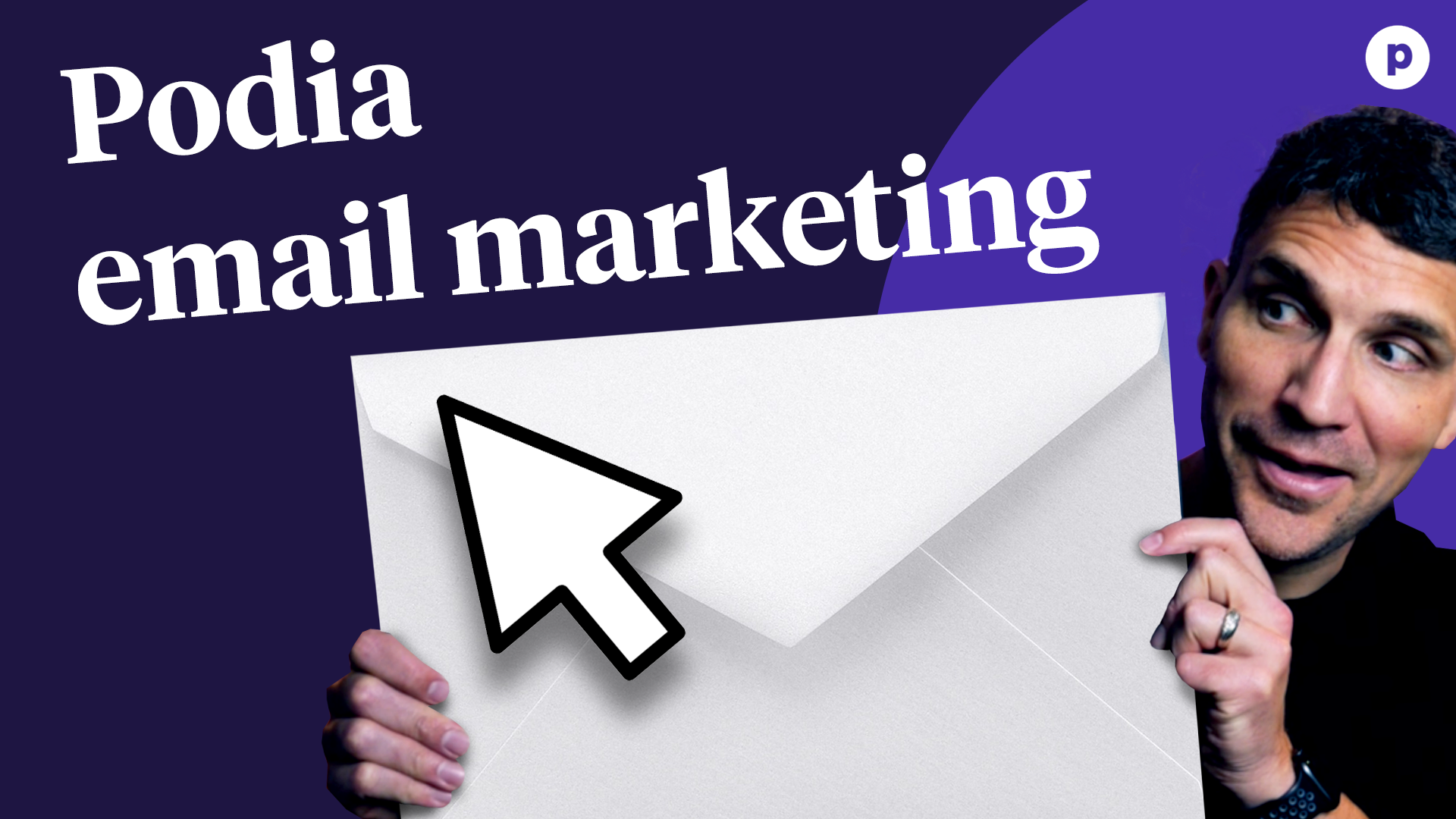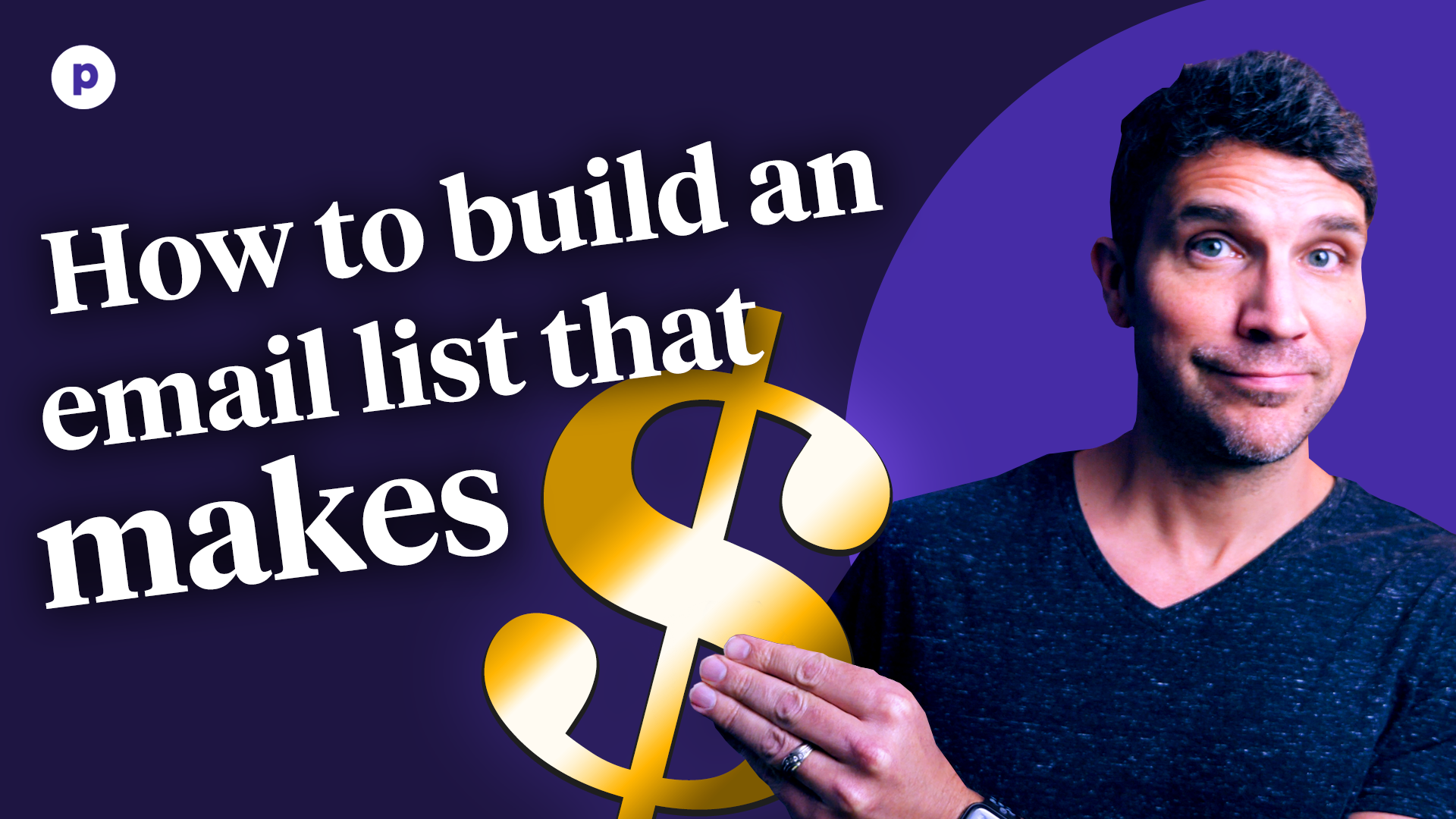5 steps to more effective sales emails
You’ve been putting in the work to build your email list. Your subscriber count is growing, people are opening your emails, but none of that is translating into increased sales for your creator business.
It may be time to revamp your email marketing strategy.
In this video, we’ll give you five steps for writing sales emails that turn subscribers into loyal customers who are excited to purchase your products.
Let’s get into it.
Hello creators, I’m Ben Toalson with Podia, where we empower creators like you to make a living doing what you love.
Email is one of the most affordable and scalable marketing tools available — especially if you’re a small business owner with a limited budget. Check out these stats…
Email marketing has an ROI of $42 for every $1 spent.
59% of marketers cite email as their top source of return on investment.
Email drives 74% more conversions than social media.
But not all sales emails are created equal. Emailing a cold lead who never signed up for your email list is more likely to land you in the spam folder than to land you a sale.
That’s why building your email list the right way and using nurture emails is so important. What does this process look like?
When you bring in leads through a newsletter opt-in form or lead magnet, they enter your marketing funnel and expect to hear from you.
A marketing funnel maps the journey that a potential customer takes from their first interaction with your business until they make a purchase. This is called the buyer’s journey and you can check out this video for a walk through of each of the stages.
In the interest stage, leads are researching and comparing a handful of products, and this is where an effective sales email can help them realize that your product is the best option.
So, how do you write sales emails that nurture leads and drive sales? Follow these 5 steps.
Step 1: Segment your email list
Segmentation is the process of dividing your email subscribers into smaller lists (or segments) based on criteria like interests, pain points, past behavior, where they are in the sales process, and more.
When you segment your email list, you can create a tailored customer experience and send the right content to the right person at the right time.
For example, let’s say you offer a free webinar on career transitions. You could create a series of sales emails specifically for the people who sign up letting them know about a paid workshop on the same topic.
You can also segment your email list based on where a lead falls in the marketing funnel.
Maybe some percentage of your subscribers consistently reply to your emails with questions. That could be a signal that they are in the desire stage of their buyer’s journey and would respond well to a sales email.
Rather than send that same email out to all of your subscribers, including some who have only recently signed up, you can write a more personalized email that will be even more effective at converting those who are likely to buy.
Alright, now that you’ve segmented your email list, let’s move on to writing a stellar sales email.
Step 2: Write an attention-grabbing subject line
Having the best email copy selling the most amazing product in the world doesn’t matter if your subscribers don’t open your emails. That’s why subject lines are such a vital part of email marketing.
Check out these tips for writing a subject line that piques readers’ interest:
Personalize your subject line by including your recipient’s first name.
Shoot for a length of 6 to 10 words.
If it fits your brand, add an emoji or two. It can lead to a 56% higher open rate than a subject line without emoji.
Include a number. Subject lines that include a number can earn a 1.3% higher open rate than average emails.
You can also run your subject line through a tool like Send Check It, which scores your subject line based on several factors and gives suggestions to help you get more opens.
Once you have an attention-grabbing subject line, it’s time to write the body of your email.
Step 3: Craft persuasive email copy
The number one key to making your sales copy persuasive is to read your customer’s mind. Here’s what I mean. Describe their pain points, struggles, and objections in their own words. How do you do this? Here are 3 ways:
Visit forums or communities where your potential customers are talking about the problem you solve.
Ask questions in your emails that invite subscribers to share their thoughts and struggles with you.
Have one on one conversations with people.
Like in real life. On a Zoom call or over coffee.
Take notes on the language people use to talk about their problems and struggles, and when you use those as a part of your sales copy, people will feel like you’re reading their minds.
Step 4: Include an irresistible call-to-action (CTA)
A clear call-to-action tells readers what you want them to do after reading your email. Combined with the persuasive copy you wrote in step three, your CTA gives leads the extra push they need to take action.
When you have your reader’s attention, it might be tempting to ask them to do a lot — follow you on social media, sign up for your next webinar, buy your new ebook — resist that temptation.
The more options you give someone, the longer it takes for them to choose one. And they may not make a decision at all. Make your potential customer’s purchase decision easier by sticking to just one CTA.
Here are three tips for writing a CTA that readers can’t help but click:
1. Use action-oriented text.
Avoid generic CTAs like “click here,” “submit,” or “learn more.” Instead, use compelling and actionable language that draws readers in, like Trello does with the CTA “Grow Your Team” in this example.
2. Keep it short.
You don’t need a long sentence to pack a punch. Keep your CTA under six words.
3. Create urgency.
60% of people make purchases because of the fear of missing out (FOMO), and 48% say an exclusive offer would make them purchase sooner. Convey a sense of limited time or availability with your CTA.
Now that you have your CTA in place, all you need to do is double-check your email signature, send it out, and watch the sales roll in, right?
Well, it’s a bit more complicated than that. If you really want to make effective sales email, the last step is super important.
Step 5: Experiment and iterate
This final step is more of an ongoing process than a single task. After you send out your first batch of nurture emails, take a look at your email metrics. If you’re not happy with what you find — or just want to take it to the next level — it’s time to change things up.
For example, you can learn a lot from your email open rate which tracks how many subscribers open a given email.
The average open rate is 19.84% across industries and if your open rate doesn’t match up, your subject line might be to blame. Try A/B testing different subject lines to find what makes your audience want to open your emails.
Maybe your open rate is fine, but your click-through rate is low. This could have something to do with your call to action. You could A/B test different CTAs to find out which one leads to more conversions.
The more data you collect through reviewing your metrics and A/B testing, the more you can optimize your sales emails and consistently turn subscribers into customers.
To recap, here are five steps for writing effective sales emails that turn subscribers into buyers:
Segment your email list.
Write an attention-grabbing subject line.
Craft persuasive email copy.
Include a CTA your readers can’t resist.
Experiment and iterate.
With these tips in mind, you’re ready to start nurturing your leads and boosting your sales. Happy emailing!


